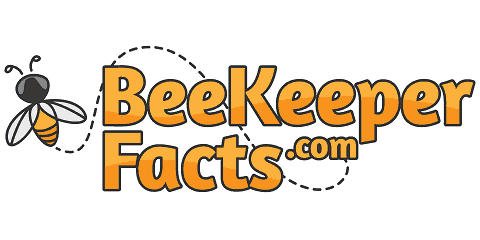Is There a Best Direction To Face a Beehive? Does It Really Matter?
I have many friends and family who love beekeeping, so I did some research of my own to understand it better and learn specifically the best direction and placement conditions for a beehive.
So, what is the best direction to face a beehive? Bees do not care what direction their hive is facing. Bees in the wild have not demonstrated a statistical preference when choosing one direction for the front of their hives. Bees are flexible and will adjust to their environment.
Bees may not care which way their hive is facing but as a beekeeper you certainly will. There are many factors to consider when setting up your Apiary that I will explain in more detail.
Which Direction Should I Place My Beehive
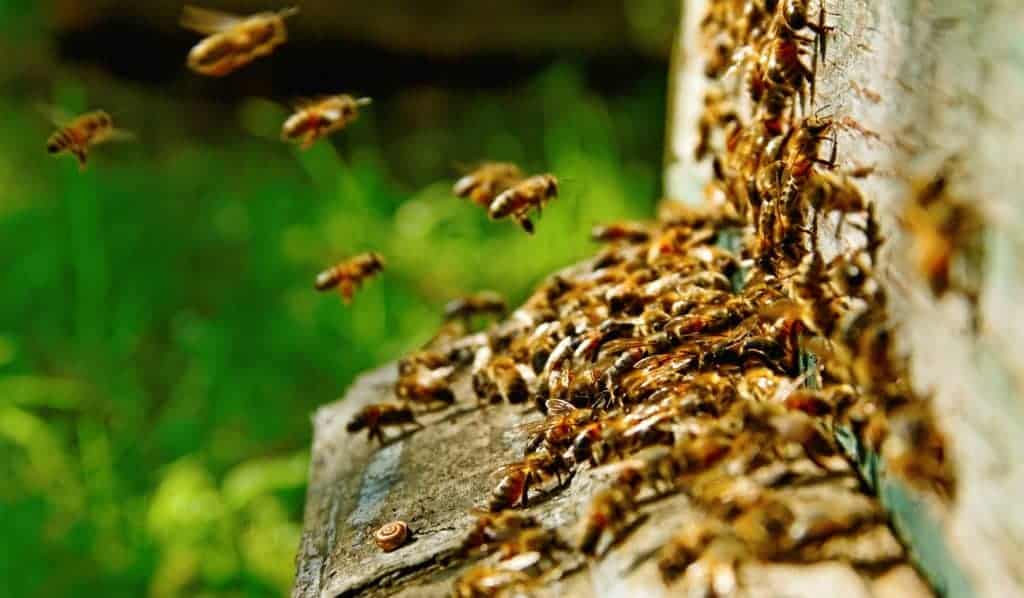
Many beekeepers feel the ideal direction to place your hives is either towards the south or east. They believe that by facing your hives east your bees can take advantage of the morning sun as it rises.
Then the bees can get an early start to foraging for the season. It is also widely assumed that bees prefer their hive entrances facing south.
Of all the studies done on bees over the years, none have proven a statistical preference on the direction of the hive’s entrance. In fact, trying to always face your hives in a south or easterly direction is very difficult and impractical.
There are several more important factors when deciding on the location and direction to setup your Apiary. They are all site specific.
- No Direct Wind – a strong wind directed at the entrance, especially in colder climates, will directly impact the well-being of your bees.
- Clear Flight Path – bees require a clear path to their foraging areas.
- Lots of Sun – it is ideal to face them in the most convenient direction to get full sunlight all day. Now this is dependent on your local climate conditions. In warmer regions you may need to have your hives shaded in the afternoon to prevent overheating.
- Good Drainage – you don’t want your beehive to get flooded. Place your beehive in a flat, dry location, avoiding all flood plains.
- Not in Public View – keep your hives away from people and any form of visiting traffic.
- Predators – you need to be aware of any predators in your area such as skunks or bears.
- Protect Against Theft – beekeeping is expensive and yes, some people will steal your bees and equipment. It happens way to often.
Most commercial beekeepers place their hives in all sorts of different directions and the bees do just fine producing very large amounts of honey.
It is common to have 4 hives all facing outward on pallets and in some cases inward facing “U” clusters of 5 (not as common in commercial operations). Some beekeepers will use small wood pallets with only 2 hives facing outward to give bees more space.
Safety Considerations When Setting Up Your Apiary
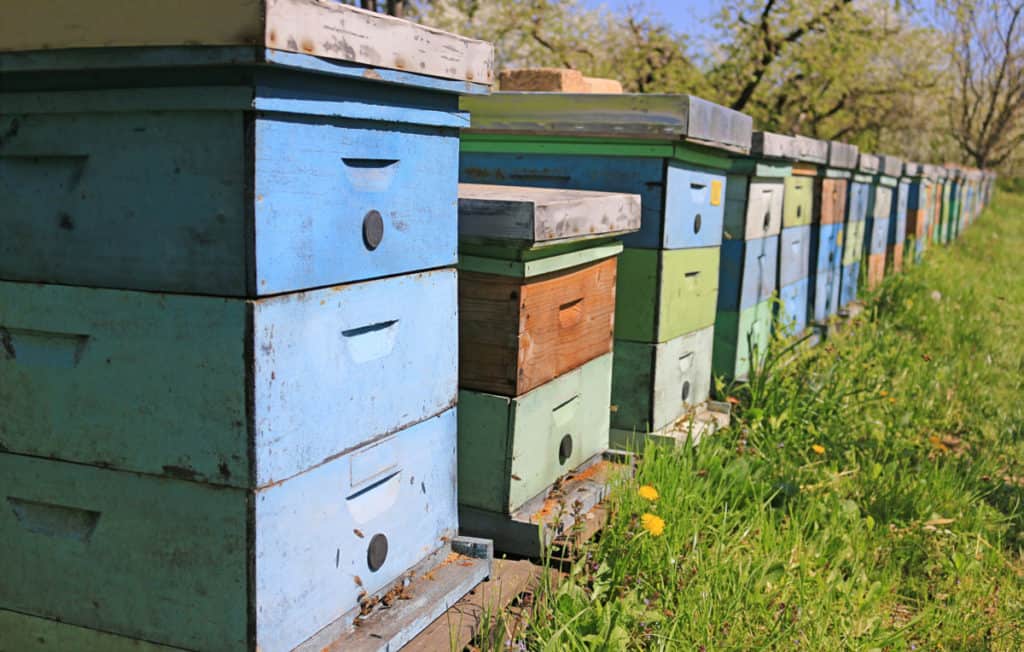
Several key safety factors to consider before setting up your hives:
Local Laws – Before setting up your hives consult your local Municipal, County and State (Province) laws to ensure you’re complying with all rules and regulations for beekeeping.
Your local beekeeping association is also a great resource for not only complying with local laws but, connecting with fellow beekeepers in your area
Flight Path – The bees flight path should be away from footpaths and any areas with high activity. It is common to use fences, shrubs and screens to force your bees to fly upwards. Ideally, you want bees at least 7 ft. in the air before entering an area frequented by people.
Water Source – It is surprising how much water bees require in hot weather. A colony can use up to 1 gallon (4 liters) of water on a hot summer day. Make sure your bees have access to a good water source within a quarter mile.
Also you need to consider your neighbors to ensure the water source isn’t your neighbors pool, backyard pond or birdbath. Bees due prefer muddy water because of the extra minerals from the soil.
Restrict Access – Depending on where your locating your hives you may need to setup a fencing and signage around them. This will keep the hives out of reach of children, pets and other people. It is also common to use electrical fence to ward of bears and skunks.
Other Considerations When Setting Up Your Beehive

Excretion of Waste – Bees can excrete waste up to 50 feet away from their hive. It looks like yellow or orange dots and can stain clothing and the exterior of vehicles. This is where your bees flight path can be an issue especially for backyard beekeeping in urban areas.
Firm & Level Ground – It’s best to have your hive on a firm and level surface such as: wooden pallets or concrete blocks. This will keep your hive off the ground and prevent rotting of the bottom board. It’s also easier to work with hives higher off the ground and your back will thank you.
Farm Crops – Keep your hives away from rows of farm crops, such as corn. These are not necessarily the greatest for foraging and more importantly, agricultural pesticides are considered one of the leading factors in high bee losses.
How Many Beehives Per Acre
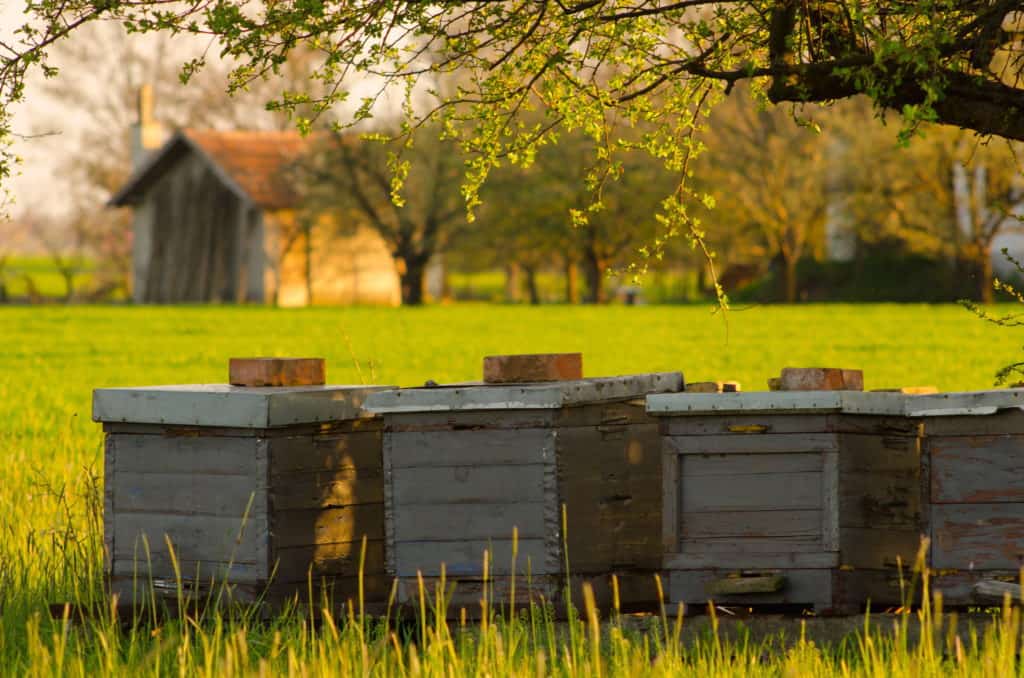
There will likely be strict local laws regarding where you can place your hives and what is required to become a beekeeper. As I stated above, it’s best to contact your local beekeeping association to ensure your compliance with local laws and regulations.
Your local region will usually illustrate the lot size to bee density for you. I’ve included a chart below to illustrate a typical relationship of lot size to bee density.
| Lot Size | Number of Colonies |
|---|---|
| Up to 1/4 Acre (10,890 sq. ft) (Lot size: 50ft x 215ft) | 2 Colonies |
| 1/4 to 1/2 Acre (21,790 sq. ft) (Lot size: 100ft x 218ft) | 4 Colonies |
| 1/2 to 1 Acre (43,560 sq. ft) (Lot size: 150ft x 290ft) | 6 Colonies |
| 1 Acre or more | 12 Colonies |
The number of colonies is also dependant on local climate and foraging conditions. The above chart does not discuss how far a hive of bees will travel to forage, just the density of bees to acreage. Bees will work and forage over a very large area. A single hive can forage up to 8000 acres.
Related Questions
What is the best wood for beehives? The best wood for beehives is a good select grade premium pine. Pine lumber is easy to work with, it’s available everywhere in North America & Europe, and it’s the most affordable. Your pine bee boxes will last decades if properly treated and looked after.
What is the best paint for beehives? The best paint for beehives is a water-based latex paint, rated for exterior use with low levels of VOC’s (volatile organic compounds). The VOC’s should be under 100 but ideally you want 50 or lower. This will protect your beehive against the elements while ensuring the safety of your bees.
How High Off The Ground Should Beehives be? Place your beehives a minimum of 4-6 inches off the ground. Most beekeepers place their hives on wooden pallets. Pallets can handle the weight of multiple boxes and keep your bottom board from sinking into the ground. This is very important during the honey flow.
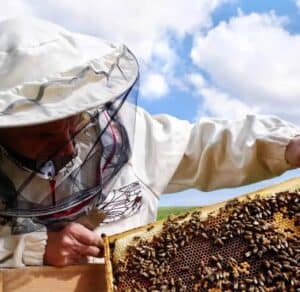
Joseph Davis
My goal is to show that anyone can take up beekeeping and it can be a very rewarding hobby. I strive to share my experiences and answer any questions you may have.
